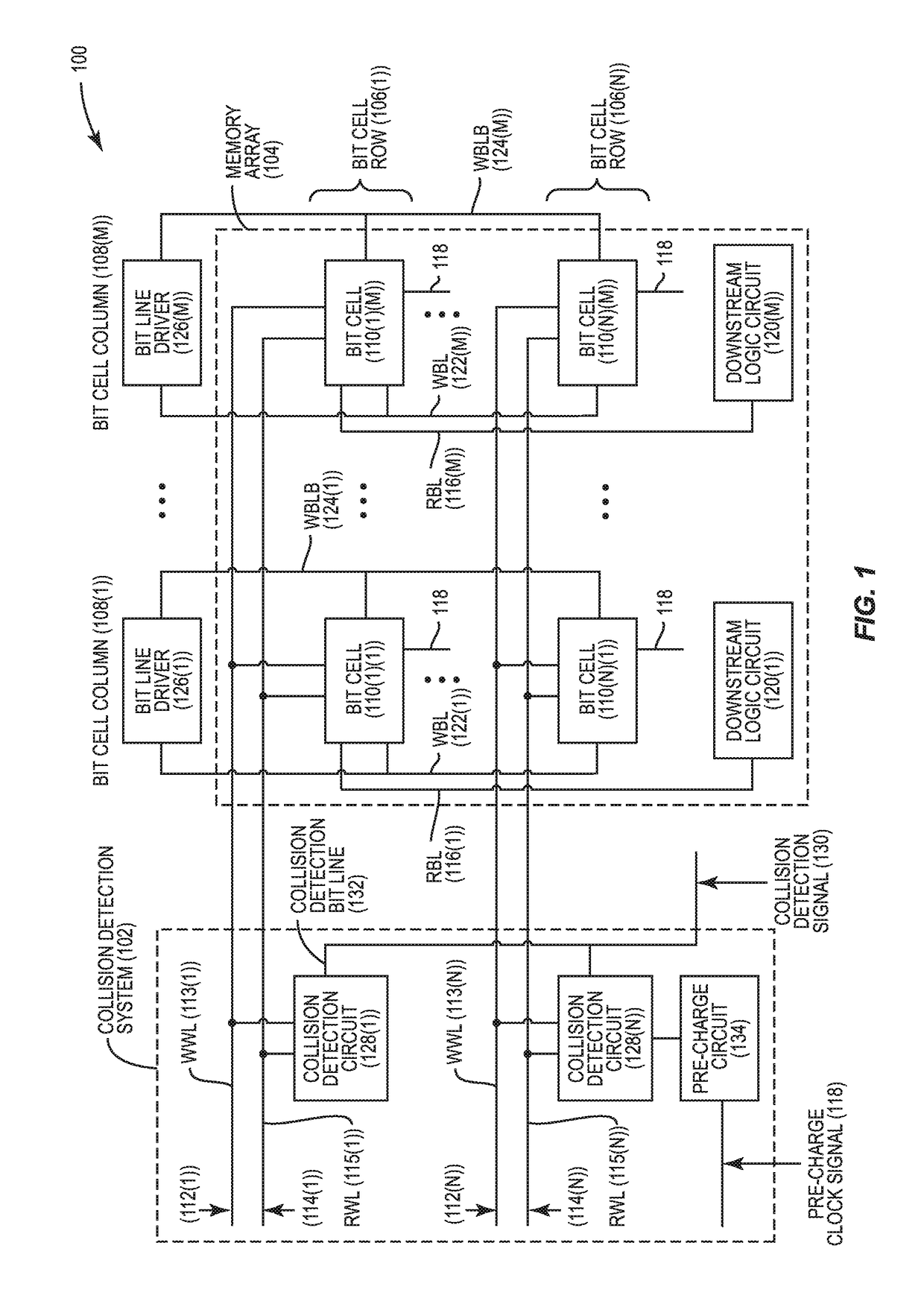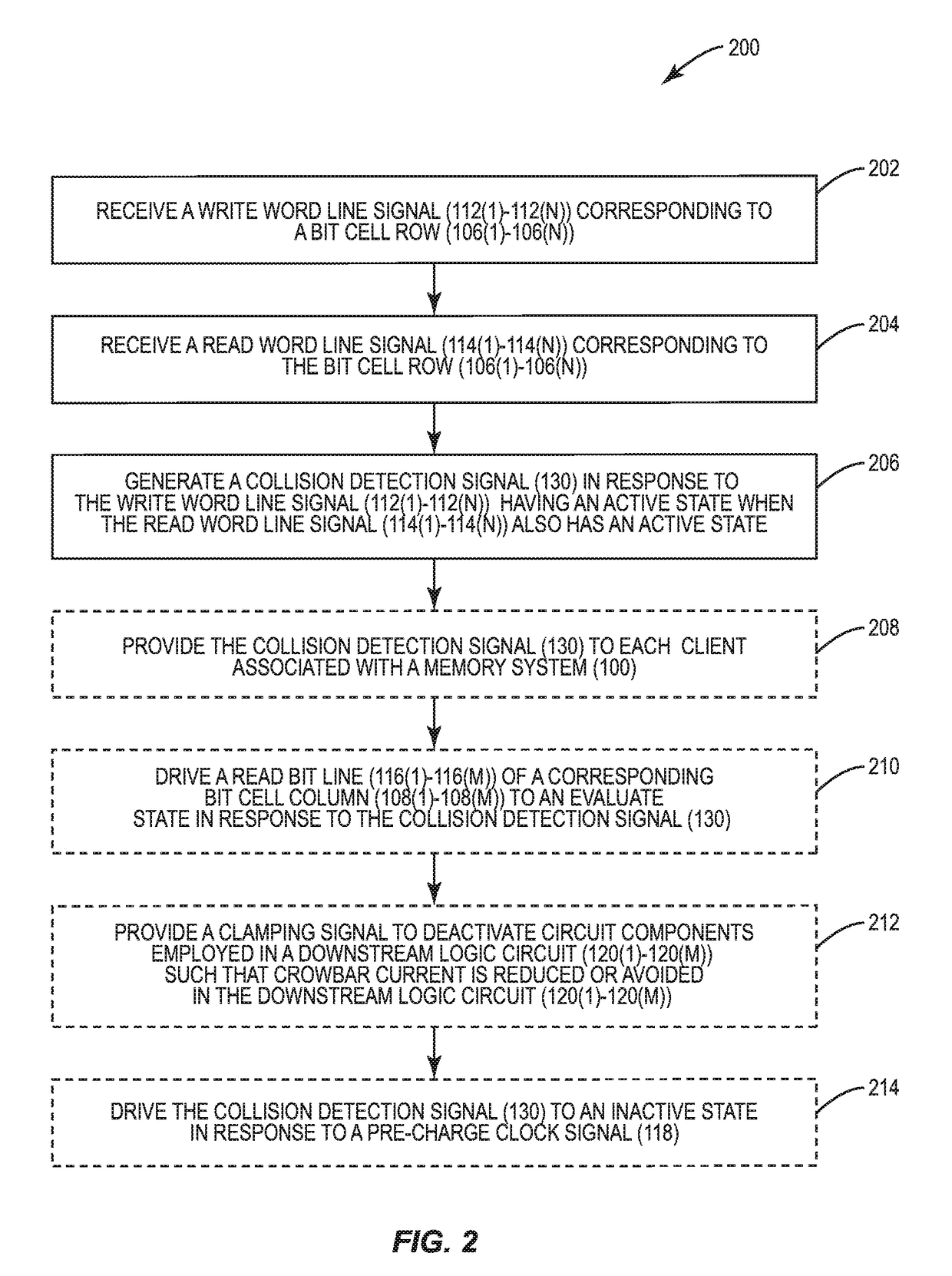Collision detection systems for detecting read-write collisions in memory systems after word line activation, and related systems and methods
a memory system and collision detection technology, applied in the field of memory systems, can solve the problems of delay in the read path for each read operation, delay the read path for every read operation, etc., and achieve the effect of reducing or avoiding overhead delays in the read path, reducing memory system performance, and reducing errors
- Summary
- Abstract
- Description
- Claims
- Application Information
AI Technical Summary
Benefits of technology
Problems solved by technology
Method used
Image
Examples
Embodiment Construction
[0019]With reference now to the drawing figures, several exemplary aspects of the present disclosure are described. The word “exemplary” is used herein to mean “serving as an example, instance, or illustration.” Any aspect described herein as “exemplary” is not necessarily to be construed as preferred or advantageous over other aspects.
[0020]Aspects disclosed in the detailed description include collision detection systems for detecting read-write collisions in memory systems after word line activation. Related systems and methods are also disclosed. In one aspect, a collision detection system is provided for a memory array that includes bit cells having at least one read port and one write port to allow simultaneous read and write operations to be performed. The collision detection system includes a collision detection circuit for each corresponding bit cell row of the memory array. Each collision detection circuit is configured to receive a write word line signal and a read word li...
PUM
 Login to View More
Login to View More Abstract
Description
Claims
Application Information
 Login to View More
Login to View More - R&D
- Intellectual Property
- Life Sciences
- Materials
- Tech Scout
- Unparalleled Data Quality
- Higher Quality Content
- 60% Fewer Hallucinations
Browse by: Latest US Patents, China's latest patents, Technical Efficacy Thesaurus, Application Domain, Technology Topic, Popular Technical Reports.
© 2025 PatSnap. All rights reserved.Legal|Privacy policy|Modern Slavery Act Transparency Statement|Sitemap|About US| Contact US: help@patsnap.com



